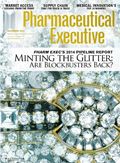Country Report: Taiwan
The past three years have been some of the most eventful in memory for Taiwan's life sciences industry. At this year's Bio Taiwan exhibition, the annual conference that invites the international life sciences community to the island, the excitement was palpable. Foreign companies turned out in record numbers to a keynote address from President Ma Ying-Jeou, who acknowledged that Taiwan was a latecomer to the sector, but nonetheless had the capability and will to compete. Buoyed by a successful wave of financing, good product strategy, and increasing international penetration, the industry seems confident.
This sponsored supplement was produced by Focus Reports.
Project Director: Andrey Muntyan
Project Coordinator: Emilie Laumond
Project Assistants: Joan Abellan Ponce de Leon, Stephen Wager
Project Publisher: Julie Avena
Graphic Assistance: Omar Rahli
For exclusive interviews and more info, please log onto www.pharmaboardroom.com or write to contact@focusreports.net
TAIWAN: Preparing for Takeoff
The past three years have been some of the most eventful in memory for Taiwan's life sciences industry. At this year's Bio Taiwan exhibition, the annual conference that invites the international life sciences community to the island, the excitement was palpable. Foreign companies turned out in record numbers to a keynote address from President Ma Ying-Jeou, who acknowledged that Taiwan was a latecomer to the sector, but nonetheless had the capability and will to compete. Buoyed by a successful wave of financing, good product strategy, and increasing international penetration, the industry seems confident.
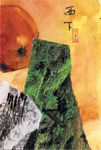
PAINTING BY ADELE CHEN
Albert Liou, vice chairman of PAREXEL International, thinks that now Taiwan needs leadership, and success stories. He points to the drug development chain. "Taiwan has great capabilities in each step along the chain," he says. "But the linkages are not as strong as they could be. Academically and therapeutically, Taiwan is very capable in certain areas, like liver disease. But in terms of drug development from discovery to market, we are several years behind the West. We need leadership that can unite the links in the chain. We need, as well, our first success stories to serve as motivation and as development models."
"We believe those first stories are coming shortly," Liou says. As for leadership, many in Taiwan look to a man that has emerged as a major connector in the country's life sciences industry: Johnsee Lee, who chairs Taiwan's Development Center for Biotechnology (DCB) and the Taiwan Bio Industry Organization (TBIO).
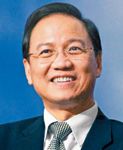
Johnsee Lee, Chairman, Development Center for Biotechnology
When Lee took over his post at the DCB in 2010, he felt that the institute focused too much on academic research: "The wrong place for us," he says. Many industry stakeholders have pointed out that in the life sciences, Taiwan has too long emphasized—"perhaps overemphasized," says Lee—basic research over commercialization, and that the DCB was doing the same work as other national institutes like Academia Sinica.
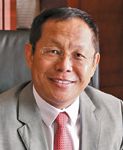
Albert Liou, Vice Chairman Asia Pacific, Parexel
Lee quickly got to work positioning DCB as the "second baton in the relay race," a translational facilitator between the lab and the shelf. As Taiwan implements a strategy that its economic council calls Diversify-Innovate-Globalize (DIG) to ease away from the country's reliance on information and communication technologies (ICT), commercializing new industries is the name of the game. Biotech is at the top of a list of six strategic emerging sectors: the "key industry" to watch in Taiwan today, says EY's country managing partner James Wang.

James Wang, Country Managing Partner, EY
In his capacity as chairman of the TBIO, a unifying association in Taiwan's life science industry, Lee is responsible not only for helping Taiwan's drug development effort, but for connecting the dots in a staggeringly diverse sector. In 2013, Taiwan's Ministry of Economic Affairs (MOEA) counted 1505 life sciences companies in this market of 23 million people. Grouped under the heading "biotechnology"—the term that we will use throughout this report—these companies may be surprising in number for a small island nation, but they are perhaps most impressive in variety. Taiwan has 450 companies in the applied biotech segment, 350 companies in the pharmaceutical segment and 705 medical devices companies!
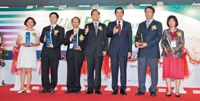
Bio Taiwan 2013 with President Ma Ying-Jeou
Wang believes Taiwan is on to something. "The industry is extremely diverse, and it's filled with companies that are in most cases much smaller than their Western counterparts," he says. "But that kind of structure is good— it's good for innovation, incubation, and cultivating a knowledge focus."
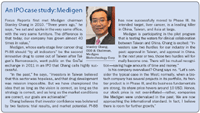
An IPO case study: Medigen
GROWTH DRIVERS
The Biotechnology & Pharmaceutical Industries Promotion Office (BPIPO) reports that total revenues for the industry have more than doubled between 2004 and 2012, to USD 8.88 billion. Lee attributes much of the difference to the newcomers, founded amid a wave of investment that began in the early 1990s. After what Lee calls an "ungraceful" development period, these companies have now surpassed Taiwan's "old guard"—large, established players that sold generics locally for decades—in terms of innovation and internationalization.
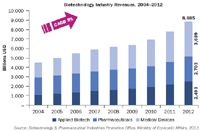
Biotechnology Industry Revenues, 2004â2012
Wang says the industry is in the latter end of its incubation stage. Looking ahead, Taiwan Inc.'s pipeline looks great: 17 compounds in Phase I, 73 in Phase II and III, and 6 at the NDA stage (BPIPO, April 2013).
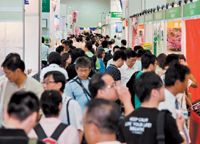
Excellent turnout at BioTaiwan
Meanwhile, the Economic Cooperation Framework Agreement (ECFA), a preferential trade pact between China and Taiwan signed in 2010, has lowered trade barriers and opened the door for broader collaboration with a country that IMS estimates will become the world's second largest pharma market by 2015. "If Taiwanese companies develop a new molecule for a condition with high prevalence in Asia, why not benefit a larger population?," DCB's Lee points out.
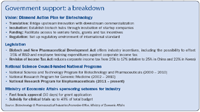
Government support: a breakdown
Investors smell an opportunity. "In the past," Lee says, "we were missing a crucial element of our ecosystem: financing. Now, because of the health of our capital market, venture capitalists are quite willing to come on board because they see an exit: sell the shares when companies float their stock on the public market. If Initial Public Offerings (IPOs) weren't so feasible in Taiwan at the moment, investors would be very reluctant to participate in the long-term play that is biotech."
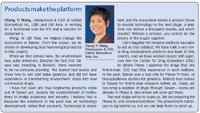
Products make the platform
ECFA: JUST THAT—A FRAMEWORK
Call it a promise. Taiwanese companies report that just because ECFA is in place doesn't mean working with the juggernaut is straightforward.
Christopher Tsai, whose blood banking and genetic testing company Bionet has successfully penetrated China, isn't particularly bullish. When asked whether China is an easy market for a neighbor with a shared heritage, Tsai offers mixed feelings: "Is it easier for Taiwanese companies to do business in China than it might be for companies with less cultural, geographical, and political proximity? Absolutely. But that doesn't mean we have a free ticket. Penetrating China is still very, very difficult."

Christopher Tsai, CEO, Bionet Corp
For instance, three years after ECFA was put is in place, pharmaceutical and med tech manufacturers in Taiwan still need a separate license to sell their products in China, which is not the case for Chinese healthcare products entering Taiwan. As the chairman of the medical diagnostics company General Biologics Corp, T.C. Lin, reports, "Today, it is not easy to get licenses in China for our products, particularly with the furor surrounding recent Big Pharma scandals in the country. The Taiwan government is pushing for mutual recognition, and producers on this side of the strait are eagerly anticipating a change." For those that rely heavily on the mainland, a China-based manufacturing plant is often the best bet for now.
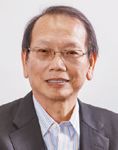
T.C. Lin, Chairman & President, General Biologicals Corporation
And yet, Taiwan has high hopes that this and other barriers will come down one by one as ECFA gains steam. One particular focus area for cooperation is clinical research. The Taiwan Food and Drug Administration (TFDA), which—crucially—is by all accounts an excellent regulator, is working in concert with the China Food & Drug Administration (CFDA) to pave the way for what Taigen chair Ming-Chu Hsu calls a "faster," "lower cost" paradigm for reaching the Greater China market with innovation.
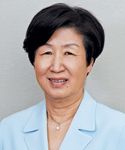
Ming-Chu Hsu, Chairman and CEO, TaiGen Biotechnology
Taigen, a drug development company that is at the New Drug Application (NDA) stage with its diabetes-focused product Nemonoxacin, is expected to release Taiwan's first innovative drug capable of meeting the CFDA's Category 1.1 New Drug requirements. The company is participating in a clinical trial pilot program with a handful of other late-stage peers. Industry stakeholders hope the program will lead to broad harmonization of protocols and mutual data recognition. The "ultimate goal," says Parexel's Albert Liou, is that "any new drug will be simultaneously approved in Taiwan and China."
The typical model may look something like this: companies will conduct Phase I and Phase II trials in Taiwan, where today the IP protection is more stringent, the clinical trial authorization process is faster (two to three months in Taiwan, versus 12 to 24 months in China), the patient protection system is mature, and there are a number of great hospitals and researchers. "Ideally," says Liou, "Chinese authorities will accept this data, and Phase III trials will take place in Taiwan and China, with an eye toward simultaneous NDA filings."

The startup
Some remain skeptical. Fang-Yue Lin, the superintendent of Taipei Veterans General Hospital (TVGH), a major clinical research center in Taiwan, remarks, "It would require a lot of 'advantage sharing' for China to accept clinical trial results obtained in Taiwan—and in my personal opinion, it will be very difficult to persuade the Chinese on this point." Industry leaders point to the fact that similar agreements with Hong Kong have looked great on paper but meant less in practice.
Liou is more optimistic. "I think the model will work, and eventually, it will work quite smoothly," he says. He doesn't believe that Hong Kong is a fair comparison. After all, both men agree on one thing: as Lin puts it, Taiwan has a "very robust" indigenous pharmaceutical industry, with "many new drugs" under development—"something that differentiates this country from its neighbors." Liou observes that the government has a vested interest in seeing this industry succeed, and will work hard to find a way to penetrate Taiwan's biggest potential market.

Thomas Willemsen, Vice President and General Manager, GSK
Moreover, although currently only local companies are involved in the clinical pilot program with the mainland, it is feasible that once the kinks are worked out, benefits will extend to multinationals too. Lin, whose hospital has a research cooperation agreement with GSK, has a confident partner on his hands. GSK's local general manager, Thomas Willemsen, says, "Taiwan remains one of the best R&D locations in the Asia Pacific region, despite its relatively small market size. And in addition to being a good research platform, Taiwan is also the perfect epidemiological environment for proof of concept or early phase trials for products destined for the Chinese market."

Fang-Yue Lin, Superintendent, Taipei Veterans General Hospital
ECFA, as the name implies, is just that—a framework. It's up to the stakeholders to bring real cases through.
THE ENABLER
The buck doesn't stop at R&D. In Taiwan, the saying goes that from a strategic standpoint, the fastest route to Beijing is through Taipei. Marietta Wu, who heads the Taiwan subsidiary of US-based venture capital firm Burrill and Company, calls the country an "enabler." An enabler for large multinationals, but principally an enabler for the second tier: small to mid-size biotechs.

Marietta Wu, Managing Director Taiwan, Burrill & Company
"When these companies attempt to penetrate the Chinese market, they inevitably face various hurdles," says Wu. "Especially now that ECFA is in place, Taiwanese partners can serve as a springboard. Taiwan understands Western business practices, can offer a strong talent pool to the industry, and also has very strong IP protection and transparent governance—all issues that Western companies care about deeply."
One common approach for international companies, according to Audrey Tseng, deputy chairman at PwC Taiwan is to "undertake R&D in Taiwan and use China for market and commercial purposes".
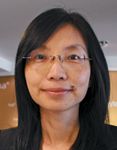
Audrey Tseng, Deputy Chairman, PwC
For companies moving from East to West, it may be that the fastest route to Washington is through Taipei as well. Wu mentions a China-based Burrill portfolio company that is looking to establish an operation in Taiwan. Why? Wu explains, "As the company has grown and established itself in the Chinese market, it has decided to try to reach the US. They found that Taiwan is a great place to do clinical studies, and a great place to bridge to the West."
Taiwan is known for meeting international standards at a time when China still lags behind. "A good partnership in Taiwan can enable a Chinese company to attain US FDA compliance. FDA certification is a long process—having an already-certified Taiwanese partner can help them to climb that ladder much faster," Wu says. Where once Taiwan outsourced to China for low-value manufacturing, China is increasingly outsourcing to Taiwan when it needs to climb up the value chain.
NEED FUEL? GAS UP AT THE GRETAI
"Perhaps the most profound change in the industry has been the ascent of biotech companies pursuing an IPO," says Audrey Tseng, deputy chairman at PwC Taiwan. "By pursuing this capital raising path, many companies have reaped the rewards. As a result of the sector's development and Taiwan's unique stock trading environment, there has been a conspicuous shift in investment capital from the ICT sector and towards the biotech arena."
ASLAN, a Singapore-based virtual drug development company, took the decision to set up an office in Taipei. Its CEO Carl Firth says he and his team came for the forward-thinking clinical environment—but they don't mind the financing options either.

Carl Firth, CEO, ASLAN Pharmaceuticals
Firth says, "Look at the number of venture funds that exist in Taiwan. There may well be hundreds! Many are now actively looking for a piece of the pie in biotech. At the same time, we have the 'Mom and Pop' investors sitting at home and thinking that they want a bit of risk in their stock portfolio, and don't just want to buy into blue chips. A younger, up and coming biotech company can look quite appealing. Finally, we have big corporates that have set up venture funds. YFY—a paper conglomerate that set up YFY Biotech Management Company—is a good example. These funds have an appetite for risk that is quite unique in Asia Pacific."

Hong-Jen Chang, Chairman & CEO, YFY Biotech Management Company
As the ICT sector has matured, investors are looking for a new outlet. Lai-Shou Su, deputy executive secretary of the state-controlled National Development Fund (NDF), says that the Ministry of Economic Affairs recognized the waning opportunities in Taiwan's prize industry, and looked toward incubation. "For the past thirty years, this country has been very successful in semiconductors," he reports. "But increasingly, the profit margins in this field are shrinking. Meanwhile, in the year 2000, the human genome was sequenced—and like many other countries, Taiwan became very excited about the future of biotech. The sector was chosen as an important driver in the diversification of our economy away from high tech."

Lai-Shou Su, Deputy Executive Secretary, National Development Fund, Executive Yuan
Reflecting on his place in the ecosystem, Su says, "the reason the government created this fund is to help build new industries from the ground up, when there is not yet much guarantee of success. In this way, the private sector can build confidence." The NDF must "set the fire—then others will join in by throwing more kindling!"
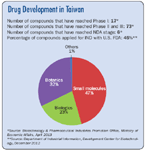
Drug Development in Taiwan
Among the private sector, the fire is now raging. According to the Market Post Observation System of the Taiwan Stock Exchange, the market capitalization of listed and over-the-counter (OTC) biotech companies in Taiwan has grown an astounding 520% in the last four years alone, from USD 2.5 billion in January 2009 to USD 15.7 billion in March 2013.
Of course, biotech tends to be a much longer-term play than high tech. Investors have had to taper their expectations. Before the mentality shifted, many of the early-mover companies had to demonstrate steady revenues before they could get into the larger rounds of financing. But increasingly, companies are able to sell the dream: "Some time ago," reports Lee-Chen Liu, president and CEO of the startup EirGenix, "investors in Taiwan would always ask if they could see a return within two or three years. Now, they ask about the product, and the potential. Now, they seem willing to wait."
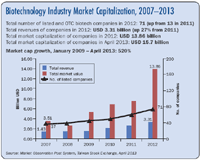
Biotechnology Industry Market Capitalization, 2007â2013
EirGenix recently bought DCB's biopharmaceutical pilot plant facility, with an eye toward providing contract development and manufacturing services (CDMO) to the world. "Our experience was quite remarkable," Liu says. "We raised USD 18 million in just two months. Our investors include active pharmaceutical ingredient (API) producer Formosa Laboratories—which owns 20 percent of the company—venture capital firms, and banks. I have never seen a fundraising round go this fast in the US."
When it is ready, EirGenix will have a great option for going public: the GreTai Securities Market (GTSM). Built with small and medium enterprises (SMEs) in mind—helping Taiwan's economy to develop the "Taiwan way" says GreTai chairman Sou-Shan Wu—the multifunction GreTai offers both listed and over-the-counter (OTC) trading, tailored for companies that are part of emerging industries.
Biotech has taken over the exchange. At the time of writing, the top three stocks traded on GreTai's 'emerging,' or OTC, market, are Taigen, TWi Pharma, and OBI; Mycenax is 6th: all pharma companies. Meanwhile, the biotechnology and healthcare index leads GTSM listed stock categories, more than doubling the numbers put up by the majority of other sectors. In 2012, more biotechs went public in Taiwan—13—than companies from any other industry.
BUBBLE, BUBBLE, TOIL AND TROUBLE
Are we looking at a bubble? Wu is frank: we are. "I think more than 30 percent of the biotech companies trading on the GTSM are overvalued," he says. "The GTSM has a higher average turnover ratio, and higher average P/E ratio, than the exchanges you will find in places like Shanghai, New York, Tokyo, or even Seoul. The ratios for biotech are higher still. Based on the numbers, no one can say this isn't a bubble in the truest sense of the word."
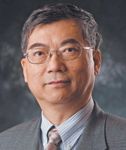
Soushan Wu, Chairman, GreTai Securities Market
Dr. Soo, managing director of the Supra Integration and Incubation Center (Si2 C), is equally candid: "The environment is starting to overheat. The problem is that this shooting star might have promoted a short-term investment strategy which is antithetical to the interests of the development of the industry. We need to address this danger."

Lee-Cheng Liu, President & CEO, Eirgenix
"And yet," Wu continues, "we need that bubble to grow. Moreover, I would say the bubble is still under control. Why? First, we have more NT dollars circulating in Taiwan today than in years past—for better or worse, this is a result of the low interest rates we have today.
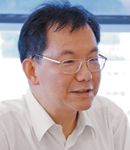
C.Y. Cheng, President, Formosa Laboratories
The second reason is this dream is a good one. Look at how many people there are in China that need safe drugs."
Still, investors would do well to exercise caution. Tsu-Der Lee, chairman of Taipei Medical University, says of the state of the public market, "In a hurricane, even a turkey can fly!"

Whaijen Soo, Managing Director, SI2C
For now, some companies are opting for a more traditional approach. TWi Pharmaceuticals, a US-focused generics company, presents itself to investors first and foremost as a business that cares about the bottom line.
Calvin Chen, the company's president, reports, "We told our underwriters and analysts not to look at us as a pharma company, but rather as a profit-driven business, regardless of our sector. Better to compare us to the IT industry! In fact, IT companies' profit margins typically approach 20-30 percent, while ours is closer to 60 or 70. We believe that revenues, rather than story, should drive up the valuation of a company."
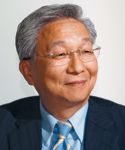
Tsu-Der Lee, Chairman, Board of Trustees, Taipei Medical University
Chen has a few words of caution. "The market is quite hot right now," he says, "and my background as a venture capitalist makes me look at the situation with a bit of concern. Certain Taiwanese drug development companies have out-licensed their compounds to US companies, and now their market cap is equal or greater than that of their US partners.
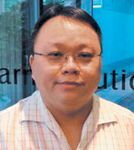
Calvin Chen, President, TWi Pharmaceuticals
"That seems very strange to me. In my experience, unless a US biotech can sell its own product—unless they have the capabilities of a Celgene or an Amgen—they cannot become very profitable. The reason US investors recognize the value of smaller biotechs is because the typical expectation for these companies is that a larger player will acquire them. For the investor, it's almost like buying an option. But I wonder about the biotechs in Taiwan. What is the ultimate exit for their investors? We haven't seen any such acquisitions in this country yet.
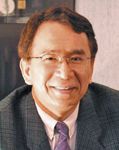
Rongjin Lin, Chairman, TTY Biopharm
"Local investors may not be sophisticated enough today. I wonder, when reality hits, what their reaction will be."
Perhaps the market and its investors could use a bit more education, and a bit more experience. Indeed, implanting a new thought process is at the heart of Si2 C's strategy. "It is critical that the government, academic institutions and investors reaffirm a stable, long-term investment approach and do not panic and flee at the first sign of difficulty," says Dr Soo. "Staying true to that approach will insert confidence and faith and stability in the system, and in the process, averting a psychologically driven run on the exchange."

Hsing-Jien Kung, President, National Health Research Institutes
FINDING A NICHE
Hsing-Jien Kung, president of Taiwan's National Health Research Institutes, believes that "instead of developing along the same lines as the industry in the US," Taiwan should "look to position itself as a niche player, that can offer innovative solutions to larger countries."

Picture of National Health Research Institutes (NHRI) facilities
Rongjin Lin, chairman of TTY Biopharm, perhaps the most pioneering and internationally successful of Taiwan's 'old guard' of generics companies, puts it more succinctly. He tells his peers in the industry, "Find a cost advantage, or find a niche!"
Costs in Taiwan aren't too bad, with a corporate tax rate of 17 percent and labor outlays that the industry reports are stable relative to China's more inflationary environment. But Taiwan's generic industry, populated by SMEs who in this small, M&A-averse market may form consortia but not mega-companies, lacks the scale and vertical integration to play the commodity game.

ScinoPharm: By the numbers
Taiwan has opted for a niche. Charles Lin of US-focused generics producer Lotus Pharmaceuticals reports, "We have focused on so-called 'multiple barrier' products—products that are difficult to produce, and therefore represent significant barriers to entry: formulation barriers, potency barriers, bioequivalence barriers, and so on. We have partnered with strong local API producers like Formosa Laboratories, which are also capable of operating on this level. Our strategy is to avoid competition, rather than meet other companies head-on."

Karen Wen, President, Mycenax Biotech Inc.
Charles Lin hopes that this strategy will be his entry ticket to the global market—especially the US. He says that Lotus doesn't want to be a 'local' company anymore. Like many of its peers, Lotus sees diminishing returns from its traditional Taiwan-based business, and is constrained by the size of the market even on good years. "Most of us are trying to go global, but the problem is in the capability. Only two or three local generics companies, ourselves included, are actively pursuing an international agenda," says Lin.

Wen Lung Su, Chairman, Taiwan Advance Bio-Pharmaceutical Inc.
Even when they reach the international stage with a high-barrier product, the future may be uncertain. Rongjin Lin believes, "After 2015, 'difficult' generics will become 'simple' generics again! So even here, Taiwan has only a very small window to compete." Recently, TTY has jumped to developing patented drugs, following a progression that started with medium-barrier generics in Taiwan, moved to high-barrier generics internationally, and will culminate with incremental innovation and then "truly" innovative products by 2020—the "only way for us to survive," says TTY's chairman.

George Yeh, President, Taiwan Liposome Company
Developing an innovative pipeline while pursuing shorter-term gains is a popular approach in Taiwan, especially given the cultural proclivity for safer bets that investors are only now shedding. For instance, Taiwan Advance Biopharmaceutical Inc. (TABP), founded in 2000 as the first DCB spin-off, laid a foundation with businesses like food testing. Today, it is on its way to transforming into a biopharmaceutical company.
Like its generics-focused peers, TABP takes a niche strategy. Wen-Lung Su, Chairman, explains, "Our strategy is based on collaboration rather than competition. Our development efforts are currently focused on oncology, and today, the global cancer drug market is worth tens of billions of USD. If all players in this field adopted a competitive policy, then the current market environment—wherein the large players make billions, and the small players make very little—will never change. On the other hand, if smaller companies shift their approach and collaborate to expand the market, to the scale of hundreds of billions of USD, then these partners can share the profits from a new and larger pie." True its strategy, TABP's lead drug candidate will look to complement, rather than compete with, an Amgen oncology drug.
For many Taiwanese drug developers, the right niche is to apply a unique technology platform to an acquire-and-develop model, with an eye toward generating 'me-better' compounds for Asia-prevalent diseases. Perhaps the most prominent champion of this approach is Taiwan Liposome Company (TLC), which completed an IPO on the GreTai last year.

Time to Celebrate for Taiwan Inc.?
George Yeh, the company's president, speaks of a 'vacuum area': "TLC's approach is based on creating value-added products. We do not look to develop first-in-class or best-in-class molecules. Instead, we innovate in areas like drug delivery. For example: can our delivery system turn a daily dosage drug into a weekly dosage drug?
"Such products typically will generate yearly global sales of 400-500 million USD, which I call the 'vacuum area.' At one end of the vacuum you have the top twenty companies, which are hunting for the next game changing, billion-plus blockbuster. At the other end you have small, localized generics companies looking to enter the market quickly, with products that can generate peak sales of 100-200* million USD. Due to their lack of technical expertise, the small generics players cannot enter the vacuum area; Big Pharma, on the other hand, isn't very interested in it. As such, this third, value-added approach comes in under the radar, and is perfectly tailored for emerging markets—notably China—that are looking for discounted innovation."
Other companies are using their unique technologies to establish a foundation in service provision that can help fuel the development of their own drugs. This is the route taken by EirGenix, as well as a Rongjin Lin's TTY invested company, Mycenax Biotech. Both have focused on the biopharmaceutical space.
"CDMO service provides us not only revenue, but also new opportunities," explains Karen Wen, Mycenax's president. "We hope to make long-term relationships with our clients. Later along the road, we hope that with some of them, we can launch shared investment projects, and plan a long pipeline together"—particularly in an area like biosimilars, where Taiwan hopes to establish a competitive edge. Mycenax's TuNEX, now in Phase III, should be Taiwan's first commercialized biosimilar.
When the pipeline is ready, the typical strategy for Taiwan's biotechs is to market or co-market in Taiwan and China, and out-license elsewhere. But some are bolder: TWi, for instance, which will start with generics but has long-term plans for innovation, plans to use its IPO capital to buy into a sales and marketing operation in the US.
SPECIAL LOOK: INSIDE THE LOCAL MARKET
According to IMS data, the Taiwan pharma market experienced its first contraction in 20 years in 2012. Growth in this USD 4.5 billion market was negative at 0.9 percent, and the hospital segment, which is particularly affected by Taiwan's reimbursement system, experienced a 2.3 percent decline.
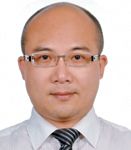
Alex Ho, General Manager, IMS
Taiwan is a reimbursed market with a single-payer framework covering 99.8 percent of the population. GDP spent on healthcare, meanwhile, is only about 6.6 percent (Ministry of Health and Welfare (MOHW)). For Chih-Ping Yang, president of the International Research-Based Pharmaceutical Manufacturers' Association (IRPMA), the unifying body for multinational pharma organizations in Taiwan, the math is simple: "Yes, our current system covers over 99 percent of the population. But do we want hamburger, or steak? Do we want patients with treatable diseases to go without help because the state cannot afford their medicine? Everybody wants steak, but the national health insurance (NHI) system has barely enough money to offer our people hamburger. We have to pay more for steak: it's that simple."
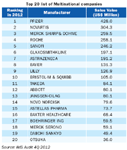
Top 20 list of Multinational companies
Dr. Yu-Ray Chen, chairman of the steering committee at Chang Gung Memorial Hospital, echoes Yang's sentiment. "The population needs educating on this issue to understand that quality services need to be financed. There is no such thing as a free lunch. The system should not be exploited. In Taiwan, despite a golden era of public healthiness, inpatient and outpatient appointments are growing annually. It is the politicians' responsibility to educate the people and help them to understand that healthcare resources are finite and should be used appropriately."
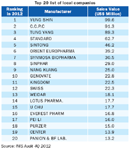
Top 20 list of local companies
The 2012 contraction of the market was the product of the seventh biennial round of price cuts under a mechanism called the Price-Volume Survey (PVS), introduced after the Bureau of National Health Insurance (BNHI) experienced its first deficit. Alex Ho, general manager of IMS Health Taiwan, says that the bureau "tried everything it could to control spending. One of their major tactics was to reduce drug prices—and they have employed this tactic continually ever since."
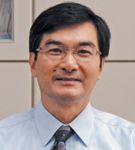
Maoting Shen, Director of the Pharmaceutical and Medical Reviews, BNHI
"Ideally," says Ho, the impact of price cuts "would be offset by the introduction of new products. However, getting products to the market has been quite difficult in Taiwan. The BNHI has not only cut the prices of existing products, but also delayed and heavily controlled the reimbursement of innovative drugs."
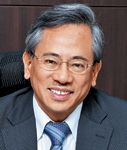
Wen-ta Chiu, Ministry of Health and Welfare
On January 1, 2013, Taiwan's Second Generation National Health Insurance Act came into force: the first major overhaul of the system since it was introduced in 1995. According to Taiwan's minister of health and welfare, Wen-ta Chiu, one of the aims of the reform was to "release some of the pressure the system has put on pharmaceutical companies."
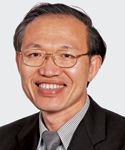
Yu-Ray Chen, Chairman of Steering Committee, Chang Gung Memorial Hospital
Chiu says that he understands the difficulties these companies have faced in this market in recent years. "It is for this reason," he says, "that as part of second generation NHI, we have looked to increase premium payments. Medical expenditures as a percentage of GDP will increase 0.2 or 0.3 percent by the end of this year."
Bringing more money into the system is something the industry has been clamoring for, but other reforms are a mixed bag. For one, the newly formed Pharmaceutical Benefit and Reimbursement Scheme (PBRS) committee, responsible for reimbursement decisions, has introduced patients into the decision-making process: something Ho expects will further delay product launches. In 2013, the number of new drugs approved in Taiwan may be as much as 50-70 percent less than 2012.

The perspective from:
The PVS system will be replaced by a Drug Expenditure Target (DET): a virtual budget given to the industry based on a growth rate that is decided by the National Health Insurance Committee. There will be no price cuts in 2013; in 2014, should costs exceed the target, the market will experience another round of cuts. And so forth. According to the predicted mechanism of action, GSK's Thomas Willemsen expects some immediate relief. "But," he says, "my overall prediction is that it will boil down to roughly the same impact over time."
The most problematic new reform is perhaps the so-called 'Article 46', which looks to introduce immediate price cuts for products that are going off patent.

Chih-Ping Yang, President, IRPMA
Heather Lin, chief operating officer of the IRPMA, is worried. "One thing that innovative companies could rely on under the previous system was that they would have a relatively long lifecycle compared to other markets, as originator drugs would maintain good market share and profitability even after they went off patent. Article 46 means that this profit will now be slashed. Given that the price for innovative drugs entering Taiwan is 50% less than the international median, and the fact that it can take up to two years for a drug to be listed in Taiwanese hospitals, this now means that there is a very short and unprofitable window for selling innovative drugs in Taiwan."

Heather Lin, COO, IRPMA
What to do? A strong innovative pipeline is a great asset. After that, it's "launch and see," says Christian Macher, general manager of AstraZeneca: "The only way you can survive here is if you have a lot of innovation, because then you don't have to compete with generics. You get a lower price for your drug, but no one else can promote the product. Then you just have to see how you make it through the changes in the healthcare system with your mature products."

Christian Macher, Country President, AstraZeneca
Life is also easier for generics companies, many of whom are locals. IMS data shows that although the generic penetration rate in Taiwan is relatively low—around 22.9 percent—and has been decreasing at a compound annual growth rate (CAGR) of negative 4.6 percent between 2008 and 2012, the majority of generics producers grew their businesses in 2012, despite facing the same price cuts as innovators did in 2011. Many innovators are losing key patents, and as Lin noted, Taiwan is less and less a market where mature products can enjoy a long life cycle.
Its healthcare system strapped for cash, Taiwan has introduced a number of incentives for generics companies, including rewards for upgrading to PIC/S GMP. The benefits extend to multinational generics players as well: "Since 2010, the BNHI has announced new initiatives to encourage generic suppliers, both domestic and foreign," reports Hospira Country Manager Mark Yang. "Today, if generic companies can demonstrate global-standard manufacturing quality—i.e., PIC/S GMP compliance—then they will be awarded premium pricing in Taiwan.
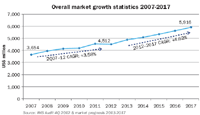
Overall market growth statistics 2007-2017
"This is not just talk. The BNHI means business, and has followed through on its promise: one of our own molecules now enjoys premium pricing, after its manufacturing site was granted PIQ/S GMP certification. Our team is currently preparing the ground for further molecule launches that can take advantage of these benefits."
Yang also hedges his bets with a strong focus on medical devices, and some business in the oft-neglected self-pay segment: "As a supplier in this marketplace, you have to manage your reimbursement business very carefully. However, if at the same time you can introduce the right products on the self-pay side, you will find that you have a good combination: you will mitigate the risks of the reimbursement market, where you will face price cuts and heavy competition. If you have the portfolio to play in the self-pay segment in Taiwan, you should."

Freia Wei, Senior Consultant, Unipharma
This is a call that is well heard by local distributor Uni-Pharma. Terry Lin and Freia Wei, General Manager and Senior Consultant, report, "Uni-Pharma was founded shortly after the creation of the national health insurance (NHI) system—but actually, the majority of our products are not reimbursed. Until recently, it was the state's policy to cut reimbursement prices every two years! We decided to develop the self-pay market, and our business has concentrated on this segment since 2005. Less that ten percent of our products are reimbursed today.
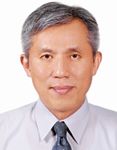
Terri Lin, General Manager, Unipharma
"We also began to focus more on medical devices, because we find that the entrance barriers are considerably lower. Med tech currently accounts for nearly 90 percent of our revenues."
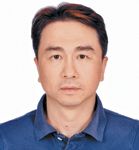
Mark Yang, Country Manager, Hospira
Now, the company is looking to leverage its market knowledge to diversify beyond distribution to the introduction of its own branded line of diagnostics. With license in hand for a cancer-detection device, Uni-Pharma has formed a partnership to manufacture and market products for the regional marketplace and beyond: "We saw that there was a constraint on the pharmaceutical industry, so we moved from pharma products to medical devices and diagnostics. But we also want to build a foundation for the long-term. The distribution business can be difficult to sustain: after all, the principal can always revoke the product rights if they chose!"
